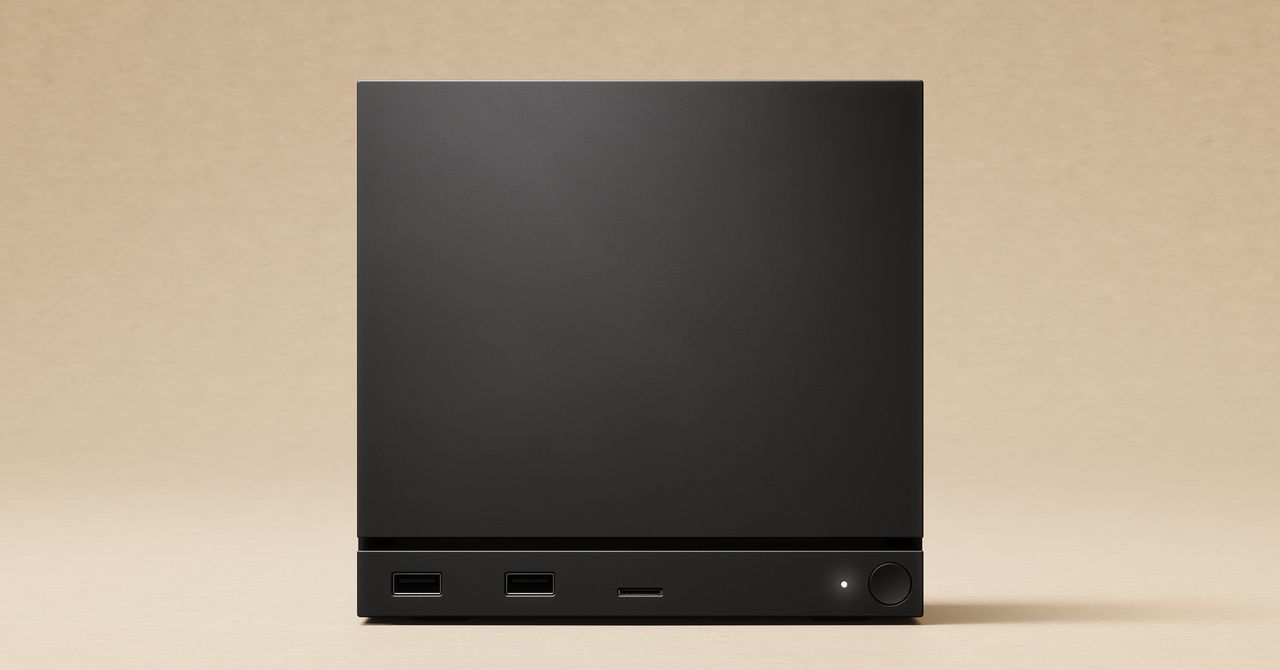
It’s set to offer two internal storage capacities, with 512GB or 2TB SSDs, with storage further expandable via microSD. Valve seems to be approaching the external storage format as a glorified game cartridge, as players will be able to move a single card between Steam Machine, Steam Frame, and Steam Deck. That also indicates that current gen SDXC format cards will be usable, rather than requiring the newer, faster microSD Express format that the Switch 2 does to run games.
It also features 16GB DDR5 RAM, 8GB GDDR6 VRAM, a host of input/output options—DisplayPort 1.4. HDMI 2.0. One USB-C and four USB-A ports—and crams even its power supply into “a roughly 6-inch cube.” That’s about the size of Nintendo’s classic GameCube, or half an Xbox Series X. It’s cute! If you want to make it cuter, you can swap out the front face plate (not unlike the range of cosmetic PS5 shells, hmm …).
That’s all a far cry from the original Steam Machines, which stood out by not having a specific form factor. The Valve of 2015 instead set a minimum spec that any manufacturer could meet to label a device as a Steam Machine, a degree of confusion that no doubt hurt its wider adoption. The new generation is 100 percent a Valve product.
About the only commonality is that both generations have been designed around using SteamOS to navigate your game library (it’s set to run KDE Plasma for its desktop environment). Valve adds that it is expanding its “Deck Verified” program, which certifies games as being compatible with the handheld Steam Deck, “to include ratings for Steam Machine, so customers can understand how their games will run.”
So. A gaming PC that seems to offer only minimal hardware customization options, in a fixed form factor, produced by one manufacturer, with games designed to run on it. You know what that looks a lot like? A console. And that should be celebrated.
Convenience Wins
It’s easy to understand why Valve may not want to embrace the “console” label for Steam Machine. As arguably the biggest driving force in PC gaming, it’d practically be tearing up its own street cred to do so.
However, consoles remain popular precisely because of their comparative limits—for many players, being able to plug a box into their TV and enjoy games on a couch is just a nicer way to play. It’s more sociable, too, especially for local co-op games. Even hooking my gaming laptop up to a TV to play PC games with friends is more of a faff than turning on a console. Plus, given the extraordinary volume of games released on Steam—more than 18,500 in 2024—why wouldn’t you want to make them more comfortable and accessible?
Services Marketplace – Listings, Bookings & Reviews
